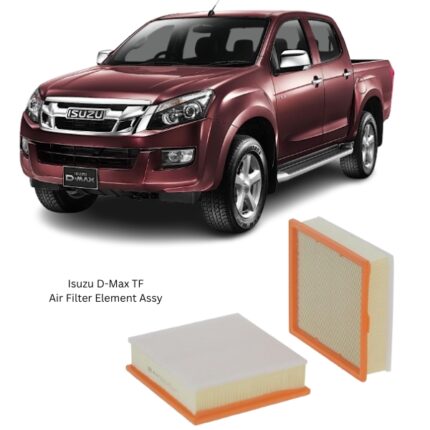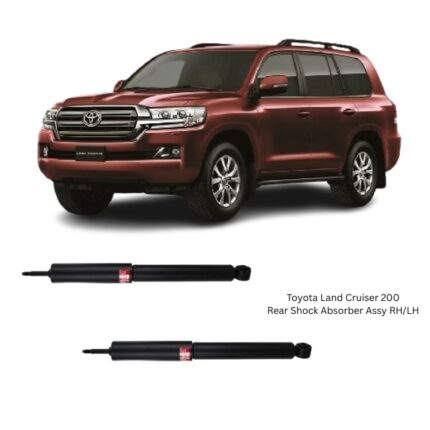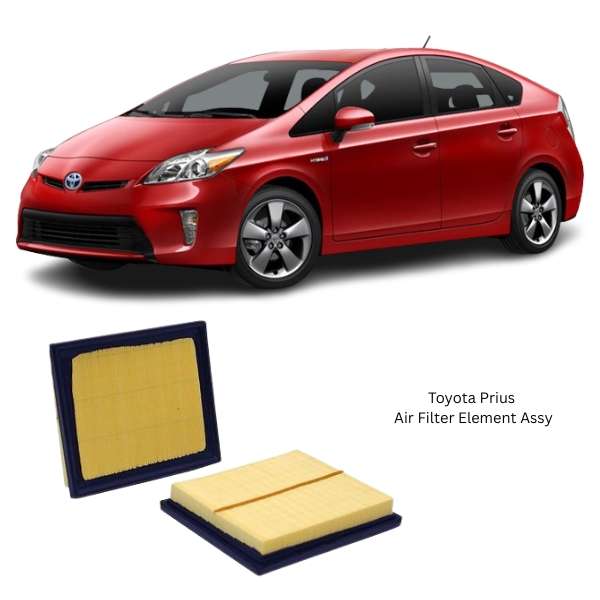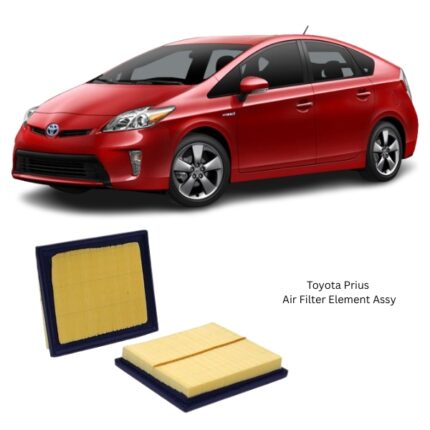Get Toyota Prius Air Filter Element Assy 17801-37020 in Kenya
An Air Filter Element Assembly is one of the most vital components in a vehicle’s air intake system, ensuring that only clean, dust-free air enters the engine for combustion. While it appears as a relatively simple part, it plays an extremely important role in maintaining engine performance, efficiency, and longevity. The air filter element is specifically engineered to trap dirt, dust, sand, pollen, and other airborne contaminants that could otherwise cause damage to the engine’s internal components.
Function and Importance
The primary function of the air filter element is to provide the engine with a continuous flow of clean air. Internal combustion engines require a precise air-to-fuel ratio for optimal performance. If the air entering the system is contaminated, abrasive particles can enter the combustion chamber, causing wear and tear on pistons, cylinders, and valves. Over time, this could lead to reduced performance, increased fuel consumption, or even costly engine repairs.
A well-functioning air filter ensures:
-
Clean Combustion: Prevents dirt from mixing with fuel, ensuring smooth and efficient burning.
-
Engine Protection: Stops particles from damaging sensitive internal parts.
-
Fuel Efficiency: Helps maintain the correct air-fuel mixture, improving mileage.
-
Emission Control: Reduces the amount of unburned fuel released, supporting cleaner exhaust emissions.
Design and Construction
The air filter element is housed within the air filter assembly or air box. It is usually made from a pleated filtering medium—most commonly high-quality paper, synthetic fiber, or cotton gauze. The pleated design increases the surface area, allowing the filter to trap more dirt without restricting airflow.
Key design features include:
-
Filter Media: Fine yet durable fibers capable of capturing microscopic particles.
-
Pleated Structure: Maximizes filtration area while keeping airflow resistance low.
-
Supporting Frame: Made from rubber, plastic, or metal to hold the filter in shape and ensure a proper seal.
-
Sealing Gasket: Prevents unfiltered air from bypassing the filter and entering the engine.
-
Reinforcement Mesh: In some designs, a wire mesh layer provides additional strength and prevents the filter from collapsing under high airflow conditions.
Air Filtration Process
-
Air Intake: Ambient air is drawn into the vehicle through an intake duct.
-
Initial Screening: Larger debris, such as leaves or insects, is often blocked by a pre-filter or mesh before reaching the main filter element.
-
Particle Capture: As air passes through the pleated filter medium, dust, dirt, and microscopic particles are trapped.
-
Clean Air Delivery: The filtered air continues through the intake manifold and into the combustion chamber, ready to mix with fuel for ignition.
Types of Air Filter Elements
Although all air filter elements serve the same core purpose, their materials and designs can vary:
-
Paper Filters: Made from treated cellulose fibers. These are highly effective for everyday use and offer excellent filtration efficiency at a lower cost.
-
Synthetic Filters: Use man-made fibers that provide superior dust-holding capacity and often longer service intervals.
-
Cotton Gauze Filters: Usually washable and reusable, offering high airflow performance—commonly used in performance-oriented applications.
-
Foam Filters: Often found in off-road or high-dust environments, offering increased dirt-holding capacity.
Signs of a Clogged or Worn Air Filter
A worn or clogged air filter can negatively affect vehicle performance. Common symptoms include:
-
Reduced Engine Power: Insufficient airflow can cause sluggish acceleration.
-
Poor Fuel Economy: Restricted airflow forces the engine control system to inject more fuel.
-
Unusual Engine Sounds: Whistling or coughing noises may occur due to air restriction.
-
Check Engine Light: In some cases, an overly dirty filter can trigger fault codes.
-
Black Smoke from Exhaust: Excess fuel burning can create visible smoke.
-
Strong Fuel Smell: Poor combustion efficiency may result in a noticeable odor.
Maintenance and Replacement Intervals
The replacement interval for an air filter element varies based on driving conditions and manufacturer recommendations. In normal driving conditions, replacement is often advised every 10,000–15,000 km. However, in dusty or polluted environments, more frequent changes may be necessary.
Maintenance tips:
-
Visual Inspection: Check the filter periodically for dirt buildup.
-
Proper Installation: Ensure the sealing gasket is intact and properly seated to prevent bypass air.
-
Avoid Over-Cleaning Disposable Filters: Some filter types are not designed for washing or blowing out with compressed air, as this can damage the media.
Impact on Engine Performance
A clean air filter directly influences engine health:
-
Improved Throttle Response: Adequate airflow enables the engine to respond quicker to acceleration.
-
Consistent Power Output: Balanced air-fuel mixture ensures smooth running.
-
Reduced Engine Wear: Eliminating contaminants prevents premature engine component wear.
-
Lower Emissions: Clean combustion produces less harmful exhaust gases.
Installation Process
Replacing an air filter element is generally straightforward:
-
Locate the Air Filter Housing: Usually a plastic or metal box near the engine intake.
-
Open the Housing: This may require unclipping latches or removing screws.
-
Remove the Old Filter: Lift it out carefully to prevent debris from falling into the intake.
-
Clean the Housing Interior: Wipe away dust or debris before fitting the new filter.
-
Install the New Filter: Ensure it fits snugly with no gaps.
-
Secure the Housing: Close and fasten it as per the design.
Environmental and Economic Benefits
Regular replacement of air filters not only benefits engine performance but also has environmental and economic advantages:
-
Reduced Carbon Footprint: Efficient combustion means fewer pollutants.
-
Lower Fuel Costs: Better fuel efficiency translates into savings over time.
-
Extended Engine Life: Reduced wear means fewer repairs and replacements.
Special Considerations for Harsh Environments
In regions with high dust, sand, or pollution levels:
-
Inspect filters more frequently.
-
Consider filters with higher dust-holding capacity.
-
Use pre-filters if available to extend the main filter’s life.
Follow us on Facebook for more parts.





Reviews
Clear filtersThere are no reviews yet.